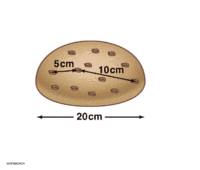To make sense of how it is possible to see this light, you can think of the universe as the expanding raisin bread model, but it expands faster than light (thus the existence of the cosmological event horizon), so we are still receiving light form the middle, not the borders.
CMB is basically perfectly black-body radiation at 2.725 48 K, but it has small variations with variations of the order of 200 microKelvin: cosmic microwave background anisotropy.
There is a slight variation in temperature of CMB across the sky of the order of 200 microKelvin. It is small to the ~2.7 K average temperature, but it can be measured.
If the initial conditions of the Big Bang and the laws of physics were perfectly symmetric, then we could expect the universe to just be one perfectly uniform boring soup.
But instead some asymetry made all the fun weird things we see today happen eventually, like galaxies and life.
And the cosmic microwave background serves as a way for us to look back in time to the early conditions of the universe, as it was set in stone as soon as the universe became transparent to this light during recombination.
Or if you want to get poetic, it is the closest we can ever get to listening to the original word of God when he setup the initial conditions of the universe.
The ansiotropies of CMB is the ultimate astronomical compass we will ever have, as it is the thing with the least proper motion.
Cosmic microwave background anisotropy measured by the Wilkinson Microwave Anisotropy Probe
. Source. Articles by others on the same topic
The Big Bang is the leading scientific explanation for the origin of the universe. It describes the event that occurred approximately 13.8 billion years ago when the universe began to expand from an extremely hot and dense state. This event marks the beginning of time and space as we understand them. Key aspects of the Big Bang theory include: 1. **Cosmic Expansion**: The universe has been expanding since the Big Bang.


